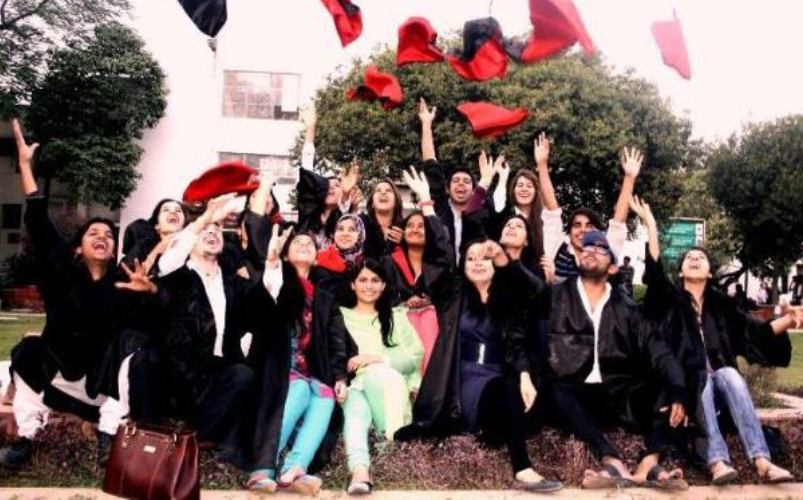New Delhi: Demanding to set up AMU-Off Campus Centres in Minority Concentrated Districts (MCDs), Centre for Educational Research & Training (CERT) -a wing of Students Islamic Organization- on Tuesday revealed that the Muslim student ratio in higher education was mere 4.9% in 2016-17. It also revealed that a vast section of Muslim populace still remained illiterate due to lack of facilities for primary and secondary education even in MCDs where Multi-Sectoral Development Programme is being implemented since 2008.
Addressing a press conference here at the Press Club of India, CERT team said that it has done a study in 34 universities across India and found out of total 9, 15,806 students, only 63,325 Muslim students have pursuing their education.
Referring to the government data, team members said Muslim enrollment ratio was far less than any other communities in the higher education sector in India.
As per the data of All India survey on Higher Education, Muslim student ratio was only 4.9 – 5.0 % in 2017-18 in proportion to their population of 15%. It is explicitly proved that the Muslim community has lack of representation. In teaching staff also Muslim representation is much wanting as there are only 4.9% teachers from the community in the higher education.
In northern India the average enrollment of Muslims in Non-minority universities is around 1-3 %, average enrollment of Muslims in Jamia Millia Islamia is 50% and 75% in Aligarh Muslim University (Source: Indian Muslims and Higher Education: A Study of Select Universities in North and South India).
They alleged that the present government’s opposition to Minority status for AMU and other minority educational institutions is deliberate and intentional.
The educational backwardness of the community is a well-known fact which was highlighted by a number of official reports such as the Gopal Singh Minority Panel Report, the reports of the 43rd Round and the 55th Round of the National Sample Survey, and the programme of action under the New Education Policy (1986) and NEP revised (1992) and Sachar (2006).
They pointed out that the various schemes launched by the successive governments to ameliorate the economic and educational condition of Muslims have remained mostly on papers, the benefits of various government schemes, aimed at improving the socio-economic condition of the weaker sections of society, have not accrued to Muslims in any significant measure.
We demand the government to take steps to ensure fair representation of student who belongs to marginal communities considering the facts of AISHE 2017 – 2018 set up by the Ministry of Human Resource Department, they said.
They also said the government must focus on 90 MCDs which were selected on the basis of 2001 census data. However, in March 2018, the Niti Aayog has released a list of 20 most backward districts in the country in which 11 are Minority-concentration districts.
They cited the example of Haryana’s Mewat district (which is just close to the National Capital) to show the discriminatory attitude of the administration in providing education facilities.
According to 2011 Census, Mewat district had total population of 1,089263. 88.61 % percent of its population is rural and just about 11.39 % percent is urban. Muslims, account for 79.20 % percent of the total. The total literacy rate is 54.08%, gender wise, male and female literacy were 69.94 and 36.60 respectively. They are listed under the OBC category which means they are recognized as part of the backward class communities. There are 493 primary schools but only 45 High Schools are in the whole district.
One more glaring discriminatory feature is that the district, which has 80 percent Muslim population but it has 352 sanctioned positions for Sanskrit, 116 for Hindi and 03 for Urdu. A report claims that out of 162,000 students registered in primary schools, 48,000 reached class 8 and only 12,000 passed class 10 in the year 2015.
The district is also lacking in educational infrastructure. It has 3 colleges and only one polytechnic and seven ITI/VEI which reveals the precarious situation of educational facilities. Primary schools exist in 78.14 percent of the villages, but there is a shortfall of Middle, High School and Senior Secondary Schools which is 9.30, 6.91 & 3.77 percent respectively. Therefore girls’ formal education suffers from neglect. Muslim girls prefer to go to Madarasas because there are no high schools in their villages. Mewat has 77 Madarasas, 18 of them are common for boys and girls.
CERT study comes to the conclusion that even after 72 years of Independence, India has miserably failed to provide easy access and quality education to all.
The demands include setting up of AMU off-campus in MCDs and primary and high schools on the pattern of Kendriya Vidyalaya’s in all the minority blocks. Providing scholarship to 11th and 12th students and run Education Awareness campaigns in all blocks. Maulana Azad National Fellowships for Minorities must be implemented with an increased budget to cater at least 3000 students each year.
National Overseas Scholarship (Karnataka Model, Rs. 20 Lakh to each student) should be implemented so that minority students can also go abroad for better, advanced educational and professional courses and research.
Sadat Hussain (research fellow, JUN), Azhar Ansar( JMI), Mohammed Ansar(IIIS) and Labeed Aliya ( national secretary SIO) addressed the media persons.
By Abdul Bari Masoud
[source_with_link url=”http://muslimmirror.com/eng/just-4-9-muslim-students-in-higher-education-cert-study/”]Muslim Mirror[/source_with_link]

